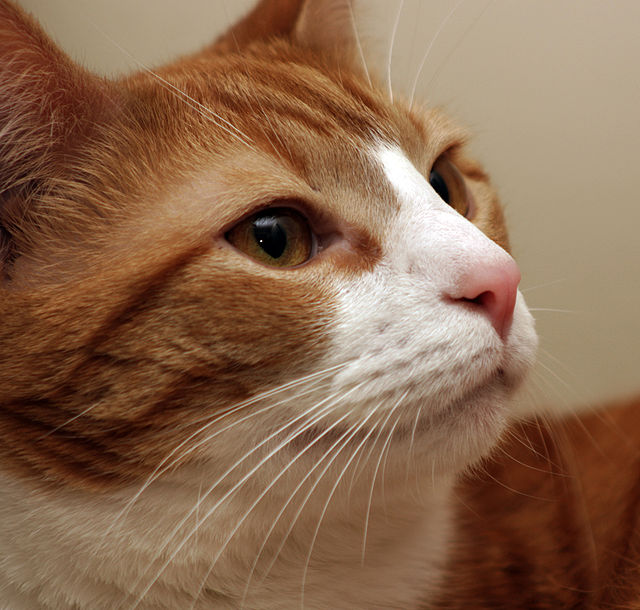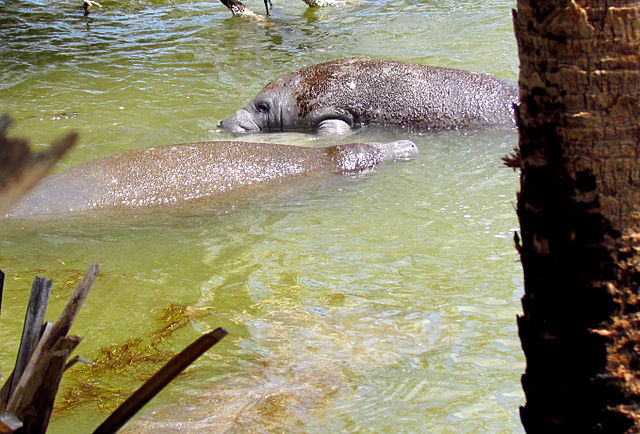Whiskers or vibrissae are a type of stiff, functional hair used by most mammals to sense their environment. These hairs are finely specialised for this purpose, whereas other types of hair are coarser as tactile sensors. Although whiskers are specifically those found around the face, vibrissae are known to grow in clusters at various places around the body. Most mammals have them, including all non-human primates and especially nocturnal mammals.
A cat with vibrissae
A chinchilla with large macrovibrissae
A Patagonian fox showing four major cranial groups of vibrissae: supraorbital (above the eye), mystacial (where a moustache would be), genal (on the cheek, far left), and mandibular (pointing down, under the snout)
A pet rat clearly showing the grid-like arrangement of the macrovibrissae on the face, and the microvibrissae under the nostrils. The supraorbital vibrissae above the right eye are also visible.
The West Indian manatee, also known as the North American manatee, is a large, aquatic mammal native to warm coastal areas of the Caribbean, from the eastern US to northern Brazil. Living alone or in herds, it feeds on underwater plants and uses its whiskers to navigate. It is divided into two endangered subspecies, the Florida manatee in the US and the Antillean manatee in the Caribbean, both of which face pressure from habitat loss, pollution, and other human activity. The West Indian manatee is the largest living member of the sirenians, a group of large aquatic mammals that includes the dugong, other manatees, and the extinct Steller's sea cow.
West Indian manatee
Skull of a West Indian manatee on display at The Museum of Osteology, Oklahoma City, Oklahoma
Manatee from Crystal River, Florida
Basking at Haulover Canal, Merritt Island National Wildlife Refuge, Florida








